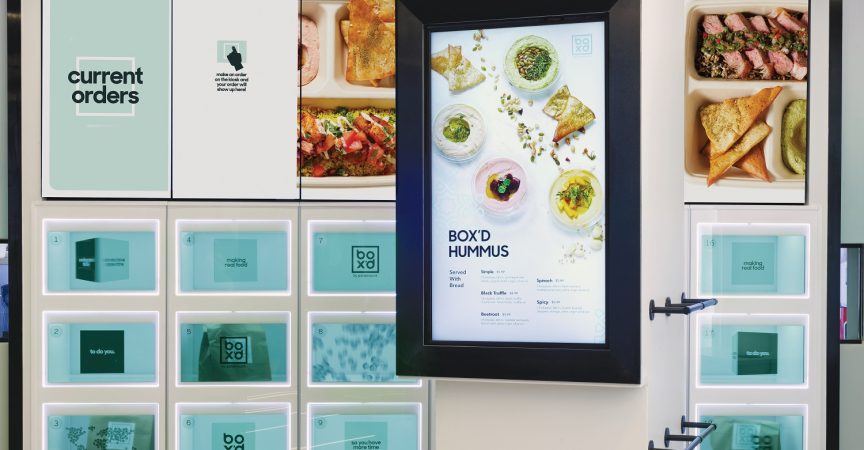How Operators are Ensuring Consumer Confidence with Digital Tools
The use of technology as an important part of a restaurant’s operations has been slowly gaining popularity in the industry over the past few years. According to a recent Restaurants Canada Outlook Survey, 82 per cent of foodservice operators agreed that technology makes restaurants more productive and 75 per cent said it speeds up service. sixty-five per cent of operators said that technology increases sales through the use of online apps that notify guests about upcoming deals or events, or loyalty programs. Studies have found that the use of kiosks can also help with upselling and improving the speed of service.
In the same survey, one-third of operators said that integrating new technology into their business was a priority for the next year, and some identified barriers to implementing technology at their establishments. One quarter felt that it would make restaurant visits and ordering more complicated for guests, however, the biggest barrier for 70 per cent of respondents was the cost of implementation. Some restaurants pointed out that while they see the benefit of technology, it would take too long to see any ROI. Regardless, 60 per cent of quick service restaurants said that they would be looking into online or app ordering technologies in the next week, and one quarter was looking at devoting more resources to third-party delivery like DoorDash and UberEats. Some table-service restaurants were also looking into implementing more technology in their establishments with one in six considering table management software/apps.
Although many foodservice establishments have been looking into leveraging technology for the past few years, there is no doubt that COVID-19 has fast-tracked the need for technology in restaurants across the country. With restaurants unable to seat customers for months, many relied on takeout and delivery to help make ends meet, and for some, the use of technology was instrumental in this process. Technology has played a huge role over the past few months in instilling consumer confidence in brands that have been ready and willing to pivot their businesses to meet their needs. Many restaurant patrons are not as comfortable with face-to-face contact, and leveraging technology has allowed many restaurants to adapt their processes to continue to offer their high-quality food in a way that is accessible and COVID-friendly, encouraging customers to continue to engage with them within their comfort zone.
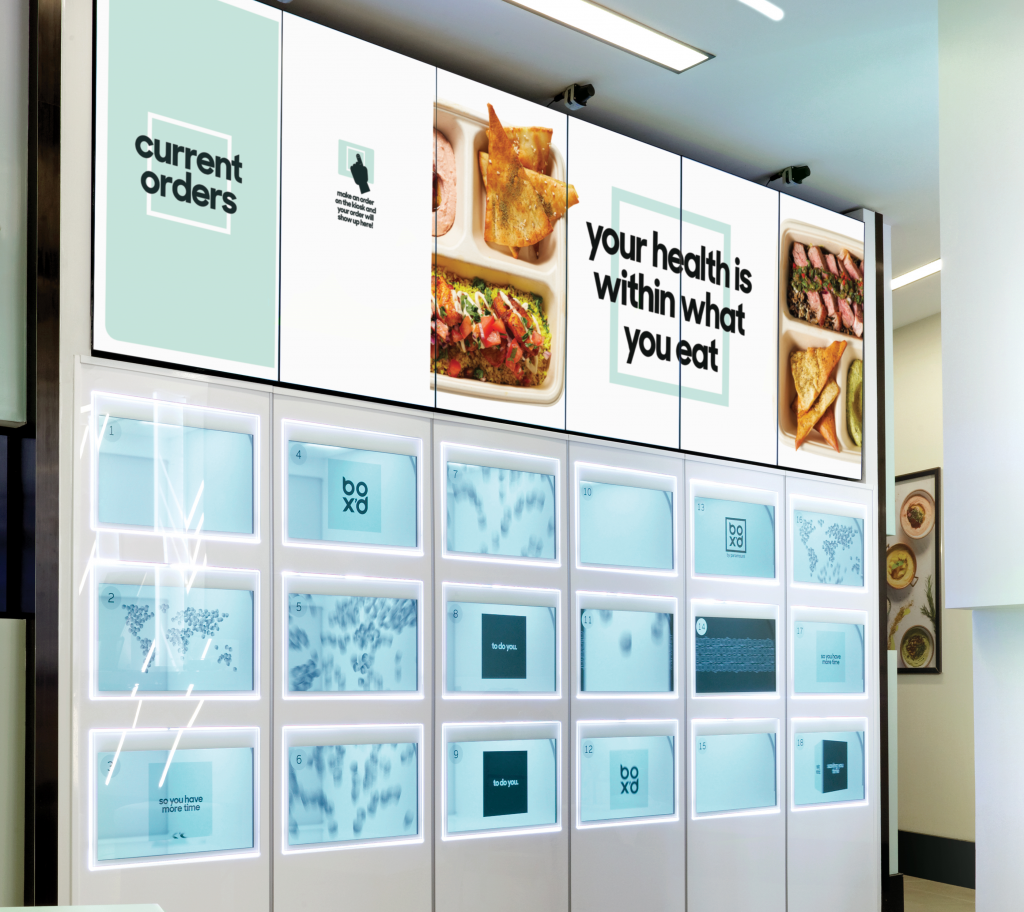
Highly successful Toronto-based brand Paramount Fine Foods recently opened the city’s first fully automated restaurant – Box’d. While the first Box’d location on King Street W opened during the pandemic, the idea for the business model came much earlier and was originally meant to ease the congestion of Toronto’s downtown lunch scene. Paramount’s Executive Director of Corporate Affairs, Karalyn White, says pre-pandemic lineups in the city’s financial district to get a great lunch were very long, forcing many people onto apps that skipped the line. “Eventually those lines got just as long as the guests waiting to order,” White remembers. “The Box’d technology allows us to have 18 orders ready at the same time with 3-4 people picking up at any one time to lower the congestion and increase the speed and efficiency.”
White says technology is key in Box’d business model. It allows them to put all their employees in the kitchen as meals are ordered via mobile phone or in-store at a kiosk. When ordering, the guest can select the time they would like to pick up their order and a display in the kitchen tells the chefs when to prepare the meal for optimal freshness. White is adamant that while Paramount has always been a people-first company that exemplifies the highest quality of fresh ingredients, technology has allowed them to add the “wow factor” to the Box’d stores and is a huge bonus, especially in today’s climate. “Guest have loved the ease of use of the technology, the fresh food and really enjoy seeing their name pop up as their meal is ‘Box’d’,” she says.
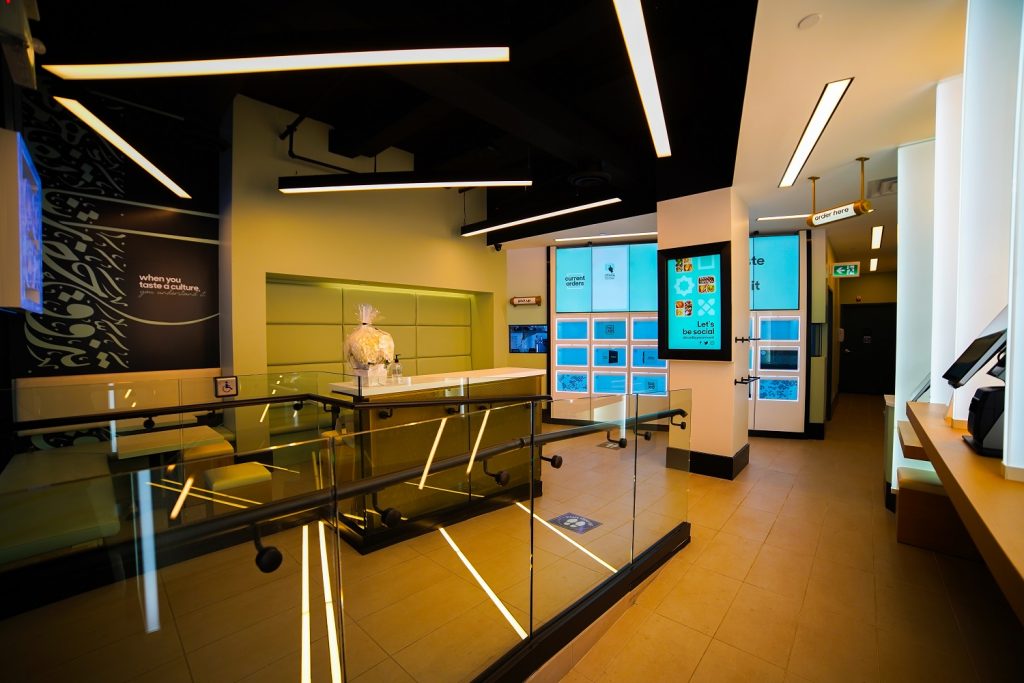
Box’d may be shaking up the lunch game in Toronto, but beverage giant Coca-Cola is also leveraging technology to instill consumer confidence by launching a new contactless solution for their Coca-Cola
Many restaurant patrons are not as comfortable with face-to-face contact and leveraging technology has allowed many restaurants to adapt their processes to continue to offer their high quality food in a way that is accessible and COVID-friendly, encouraging customers to continue to engage with them within their comfort zone.
Freestyle machines. These machines have always allowed consumers to pour their own choice of Coca-Cola soft drinks all from one simple interface; but their new technology allows them to choose and pour a drink from their phone in seconds—without having to sign up for a membership or download an app. All the thirsty consumer has to do is hold their smartphone up to the display screen to auto scan a QR code, which immediately connects the Coca-Cola Freestyle user interface to their phone. “The technology is really impressive,” said Crystal Drover, Freestyle lead in Canada.
The touch-free solution was developed in just over a week in direct response to the COVID-19 pandemic. According to Coca-Cola, all beverage dispensers are safe with recommended care and cleaning, but the team knew that people may prefer a touchless fountain experience. Research from Civic Science in the U.S. has shown that 60 per cent of restaurant guests prefer to pour their own fountain drinks and 40 per cent strongly agree that they feel safer when in control of their drinks, further proving this move is responding to a consumer want and need. “It has been inspiring to see our Coca-Cola team innovate and adapt to meet the changing needs of our consumers and partners during these unprecedented times,” said Darlene Nicosia, President of Coca-Cola Ltd. “We’re excited to be bringing the new Coca-Cola Freestyle Mobile Pour technology to Canadians everywhere.”
Mary Brown’s is another example of a fast-food chain that is leveraging technology to expand its business. They recently launched a new app that offers a contactless way to order their famous chicken, while also rewarding brand loyalty. Vice President of Marketing, Jeff Barlow, says the development of the app was driven by wanting to heighten guest hospitality, convenience, and loyalty, while also giving them important data on guest behaviour and preferences. “Hospitality in the current climate has de-emphasized human contact and some other traditional forms of hospitality like table touches, time spent by guests around staff, etc.” Barlow says. “Further, the data gathered by the app will guide us in many ways.”
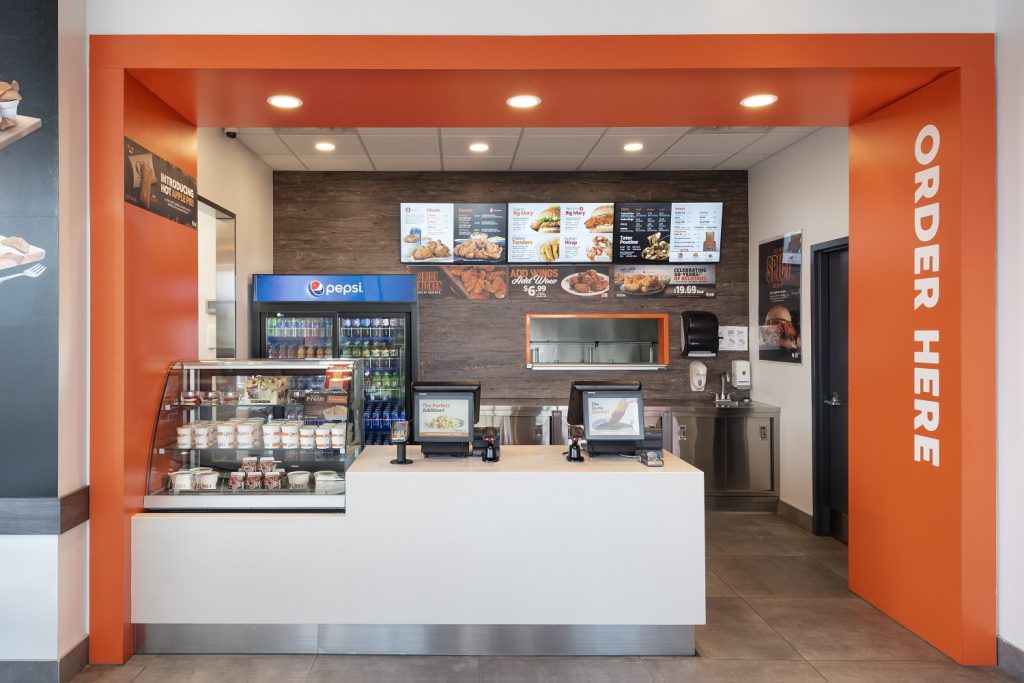
The launch of the app went better than expected with well over 100,000 downloads in the first six weeks. “We knew our loyal fans would welcome an app that rewards frequency; but the pandemic also drove many downloads from a safety and comfort perspective,” Barlow notes. “The app is all about another choice for guests to get their favourite chicken in whatever way suits their convenience and comfort level.”
Ottawa-based company Mad Radish is no stranger to the app game and is combining it with putting their own spin on the concept of ghost kitchens by centralizing three distinct brands in one convenient location. Mad Radish has recently expanded their offerings from their original high-quality salad concept to include Luisa’s Burritos & Bowls and Revival Pizza. “We’ve reimagined Mad Radish by combining the best elements of a typical ghost kitchen with the functionality for a customer-facing restaurant, that means housing three brands with three distinct menus under one roof, while still allowing diners to visit a physical location to place their order,” says founder David Segel.
According to Segel, the pandemic drove them to look at their business a bit differently, which inspired the expansion into the two new brands that are now available at all Mad Radish locations. He says this shift has enabled them to move from a primarily physical experience to being able to offer great-tasting food to people where and how they want it. “We still need to offer a great in-restaurant experience—because people will come back to restaurants—but we know we need to provide an equally great at-home experience,” he says.
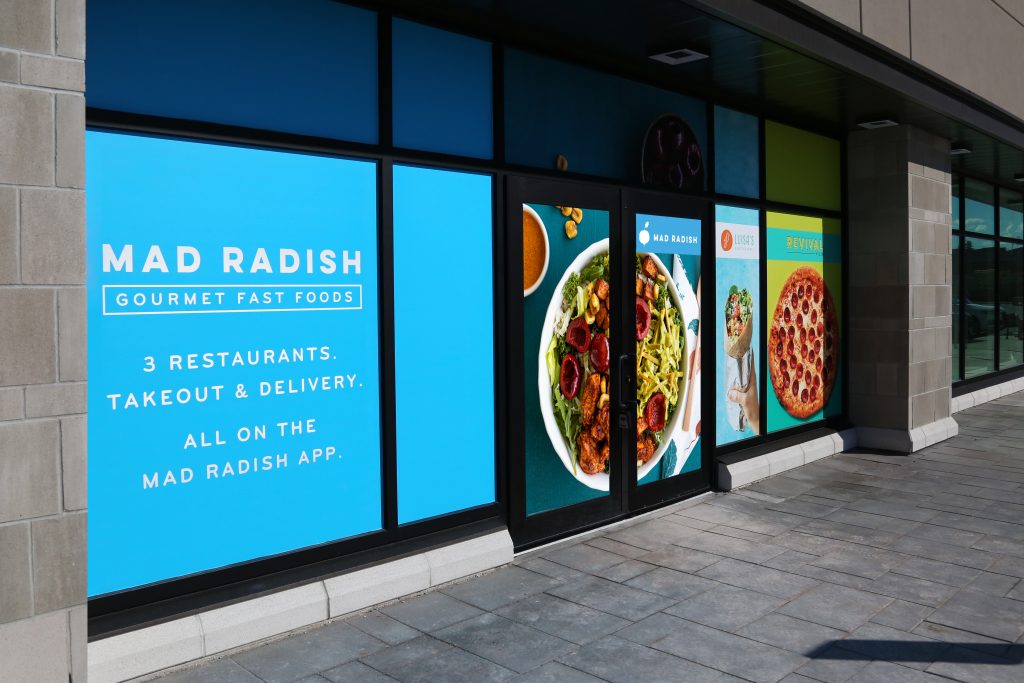
Segel notes that Mad Radish has always been digital-first, offering contactless order and pay-ahead options since they opened their first store in 2017. He says that while there is no doubt the pandemic has accelerated the need for technology in the restaurant industry, it is also important to look at how quickly consumers have become accustomed to getting what they want, when, where, and how they want it. “To put it another way, we’re much less tolerant of inconvenience,” he says. “Technology is enabling us to eliminate inconvenience for our customers.”
Segel is adamant that operating Mad Radish as a multi-brand restaurant would not be possible without the use of the technology that is powering their business. In a time when many restaurants are struggling to make ends meet, Mad Radish is opening their seventh location in January and Segel says they are not slowing down. “It’s difficult to predict what the future will hold for the foodservice industry,” he says. “But I’m optimistic that we’ll come out of this smarter, stronger and more successful than we ever have been.”
Although the cost to implement technology may still be a barrier for many restaurants, the COVID-19 pandemic has solidified the benefits of investing in technology to streamline operations and respond to consumer demand. The Restaurants Canada’s 2017 Outlook Survey projected that with rising labour costs and shortage of workers, restaurants would be investing more in technology in following years. Although no one could have predicted the significant challenges that have come with the COVID-19 pandemic, there is no doubt that technology will play an increasing role in the foodservice industry, by helping to decrease face-to-face contact and improve service delivery, instilling consumer confidence across the board.



